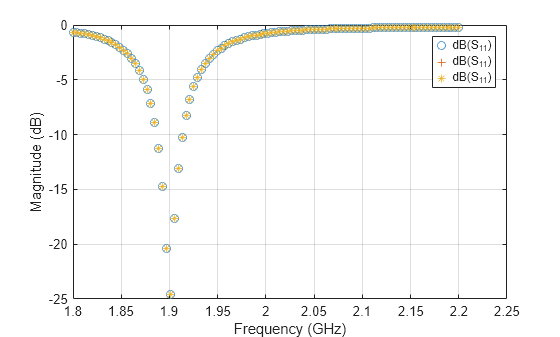sparameters
Calculate S-parameters for antenna or array
Syntax
Description
[___] = sparameters(___,
calculates the complex S-parameter of antenna or array using Z0)Z0
reference impedance.
[___] = sparameters(___,
uses the parallel pool to calculate S-parameter of antenna or array for each frequency. To
use this feature, you need a Parallel Computing Toolbox™ license.UseParallel=true)
[___,
uses frequency sweep interpolation method to calculate S-parameter of antenna or array,
and also returns the type of interpolation method and rational fit parameters.sweepobj] = sparameters(___,SweepOption=Value)
sobj = sparameters(netparamobj)netparamobj, to S-parameter
object with the default reference impedance.
sobj = sparameters(netparamobj,Z0)netparamobj to S-parameter object
with a Z0 reference impedance.
Examples
Input Arguments
Name-Value Arguments
Output Arguments
Version History
Introduced in R2015aSee Also
Functions
sparameters(RF Toolbox) |vswr|returnLoss|impedance|feedCurrent|efficiency|correlation

